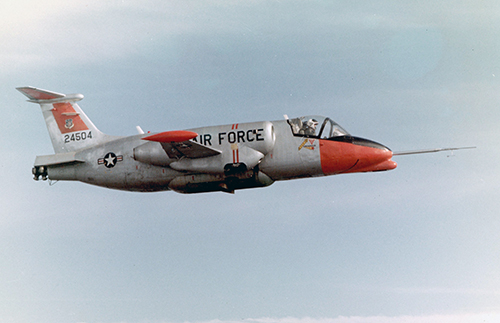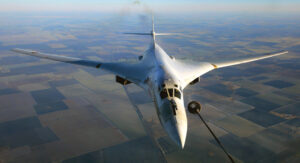The Lockheed XV-4 Hummingbird
While the U.S. Air Force took control of virtually all military aircraft, the U.S. Army continued to use its own helicopters and occasionally ventured into the ongoing quest for a non-rotary vertical takeoff and landing (VTOL) aircraft. One of the Army’s specifications led to a Lockheed design for a turbojet-powered VTOL craft with sensory equipment for battlefield surveillance and target acquisition. Originally designated the VZ-1, it was renamed the XV-4 and more popularly—and perhaps optimistically—the Hummingbird.
Two different prototypes were built. The first, XV-4A serial no. 62-4503, had two Pratt & Whitney JT-12A-3LH turbojets generating 3,300 pounds of thrust. When large fuselage panels were opened up, engine flow was directed downward through multiple nozzles, supplemented by a secondary flow of cold air. Takeoff and hovering was undertaken with the nose up and the nozzles at a 12-degree angle, while forward flight involved holding the nose horizontally and the nozzles at 22 degrees. The aircraft was 32 feet 8 inches long and had a 25-foot 8-inch wingspan and wing area of 104 square feet. Empty weight was 4,995 pounds and gross weight 7,200 pounds. Its maximum speed was projected at 518 mph at 1,000 feet, with a range of 600 miles.
After tethered test hops followed by one with a 300-pound weight suspended underneath, the XV-4A made its first horizontal flight on July 7, 1962. Subsequent tests revealed a dicey 1.04-pound thrust-to-weight ratio. On June 10, 1964, the first Hummingbird crashed, killing its pilot.





